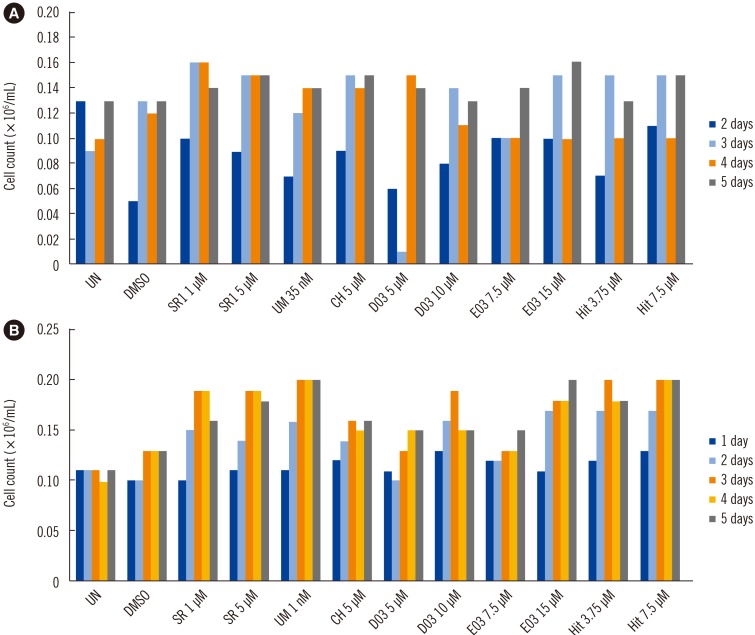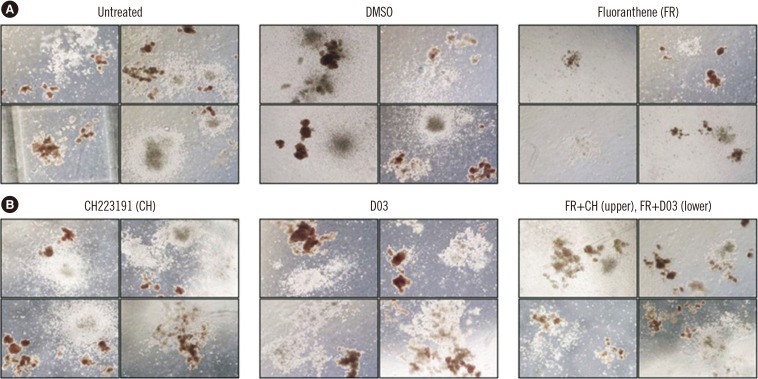Ann Lab Med.
2019 Nov;39(6):580-583. 10.3343/alm.2019.39.6.580.
Fluoranthene-Induced Cytotoxicity and Direct Effect of Aryl Hydrocarbon Receptor Antagonist on Hematopoietic Stem Cell Differentiation
- Affiliations
-
- 1Department of Laboratory Medicine, Chonnam National University Medical School and Chonnam National University Hwasun Hospital, Hwasun, Korea. mgshin@chonnam.ac.kr
- 2Brain Korea 21 Plus Project, Chonnam National University Medical School, Gwangju, Korea.
- 3Department of Laboratory Medicine, GwangYang Sarang General Hospital, GwangYang, Korea.
- 4College of Korean Medicine, Dongshin University, Naju, Korea.
- 5Environmental Health Center for Childhood Leukemia and Cancer, Chonnam National University Medical School and Chonnam National University Hwasun Hospital, Hwasun, Korea.
- KMID: 2450955
- DOI: http://doi.org/10.3343/alm.2019.39.6.580
Abstract
- No abstract available.
Figure
Reference
-
1. Dietrich C, Kaina B. The aryl hydrocarbon receptor (AhR) in the regulation of cell-cell contact and tumor growth. Carcinogenesis. 2010; 31:1319–1328. PMID: 20106901.2. Rondelli CM, Larsen MC, N'Jai A, Czuprynski CJ, Jefcoate CR. PAHs target hematopoietic linages in bone marrow through Cyp1b1 primarily in mesenchymal stromal cells but not AhR: A reconstituted in vitro model. Stem Cells Int. 2016; 2016:1753491. PMID: 27891153.3. Angelos MG, Ruh PN, Webber BR, Blum RH, Ryan CD, Bendzick L, et al. Aryl hydrocarbon receptor inhibition promotes hematolymphoid development from human pluripotent stem cells. Blood. 2017; 129:3428–3439. PMID: 28533309.4. Smith BW, Rozelle SS, Leung A, Ubellacker J, Parks A, Nah SK, et al. The aryl hydrocarbon receptor directs hematopoietic progenitor cell expansion and differentiation. Blood. 2013; 122:376–385. PMID: 23723449.
- Full Text Links
- Actions
-
Cited
- CITED
-
- Close
- Share
- Similar articles
-
- Potential biomarkers and antagonists for fluoranthene-induced cellular toxicity of bone marrow derived mesenchymal stem cells
- Inhibition of indoxyl sulfate-induced intrarenal renin-angiotensin system activation: targeting the aryl hydrocarbon receptor
- Aryl Hydrocarbon Receptor Ligands Indoxyl 3-sulfate and Indole-3-carbinol Inhibit FMS-like Tyrosine Kinase 3 Ligand-induced Bone Marrow-derived plasmacytoid Dendritic Cell Differentiation
- Leukotriene B4 pathway regulates the fate of the hematopoietic stem cells
- Hematopoietic Stem Cells Culture, Expansion and Differentiation: An Insight into Variable and Available Media



